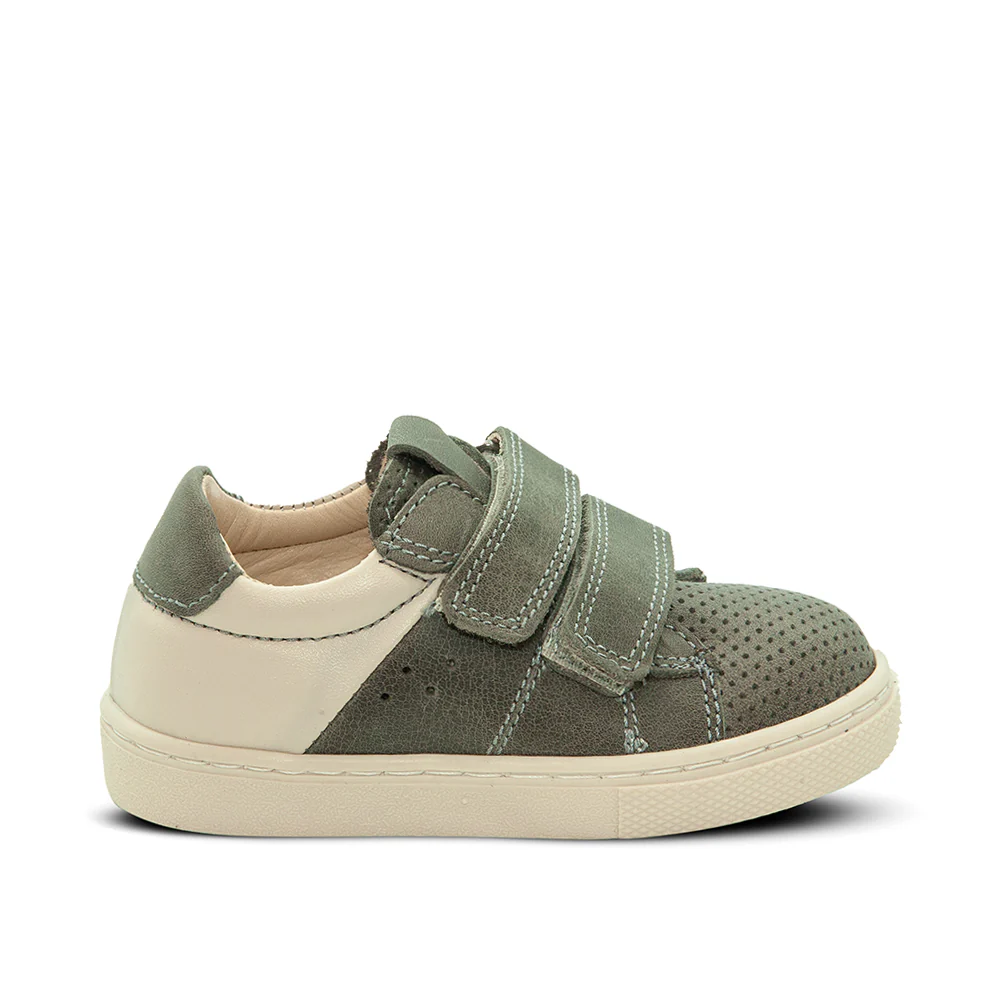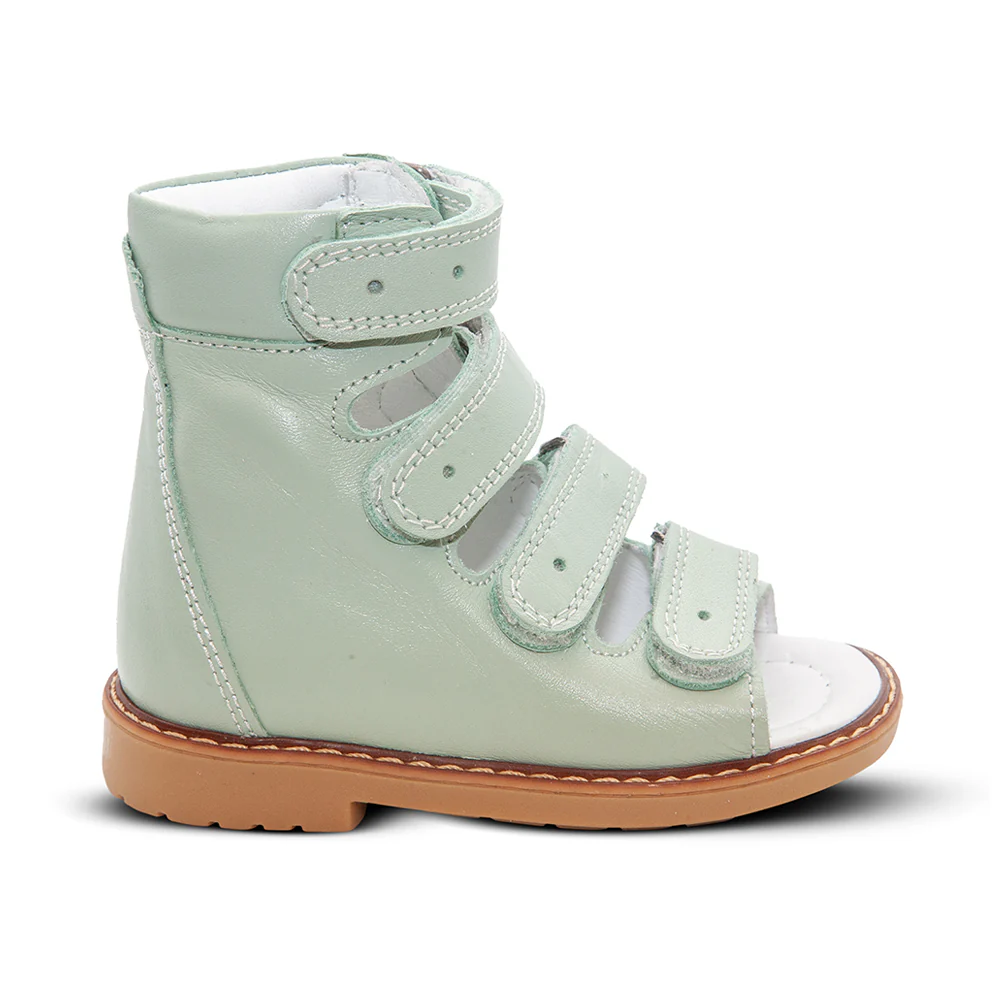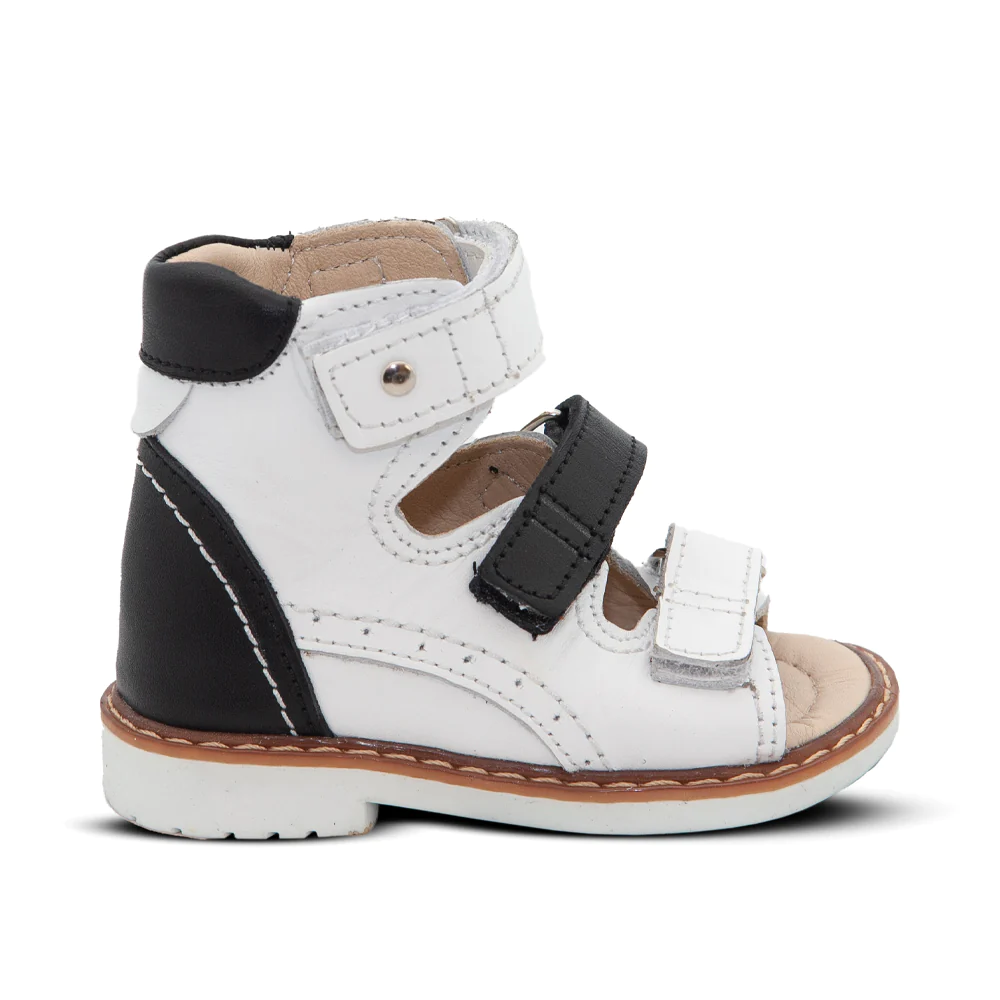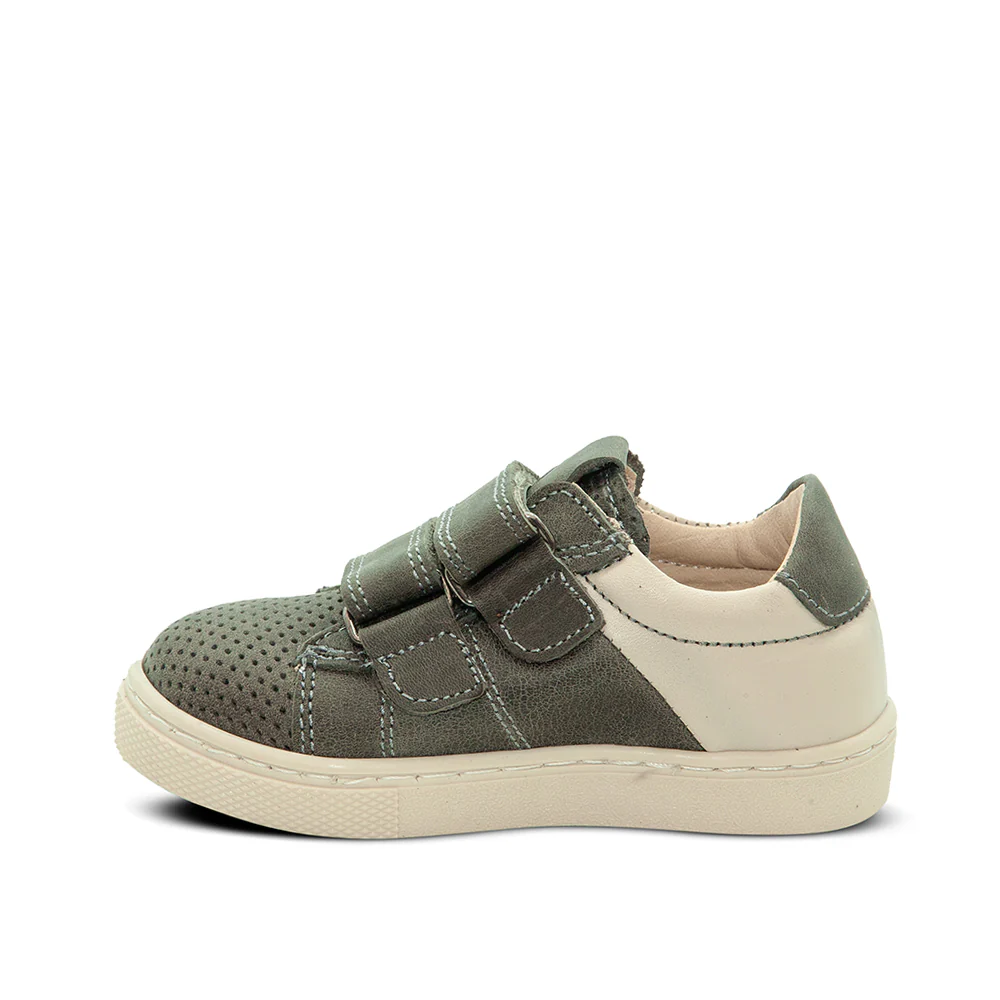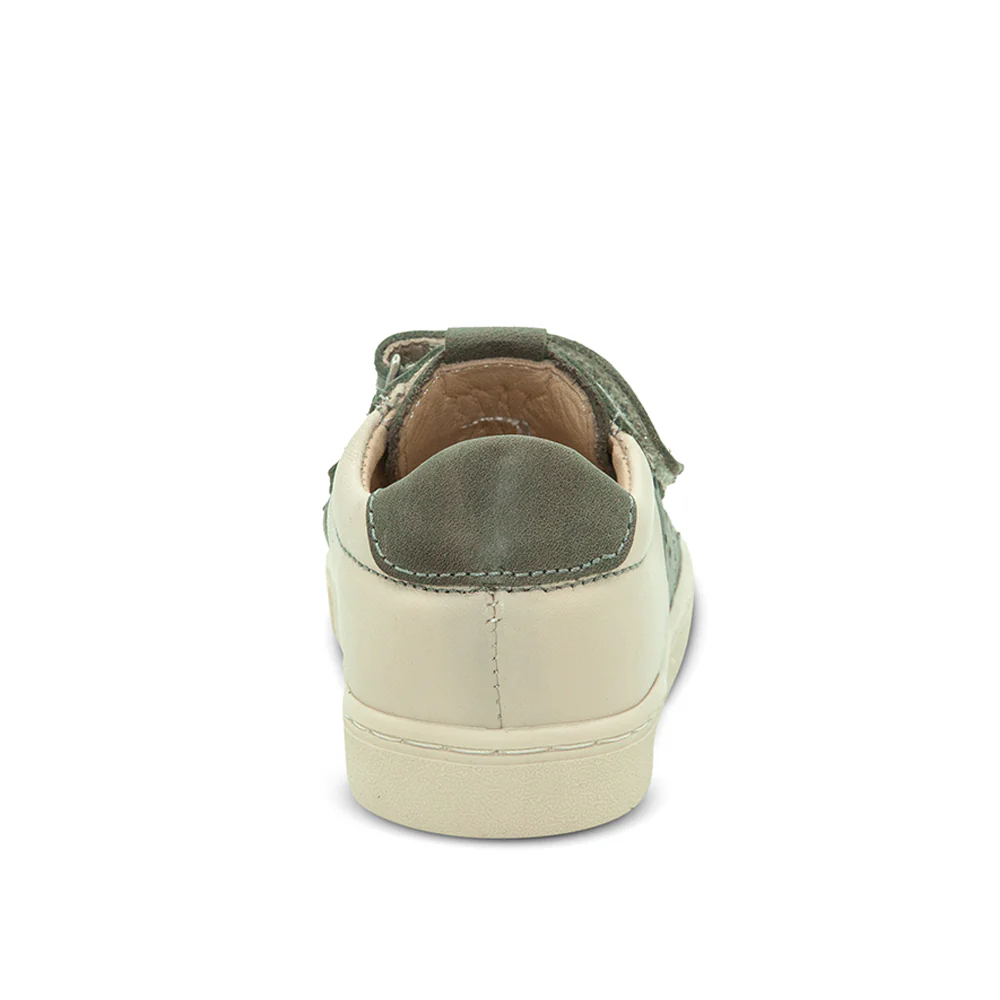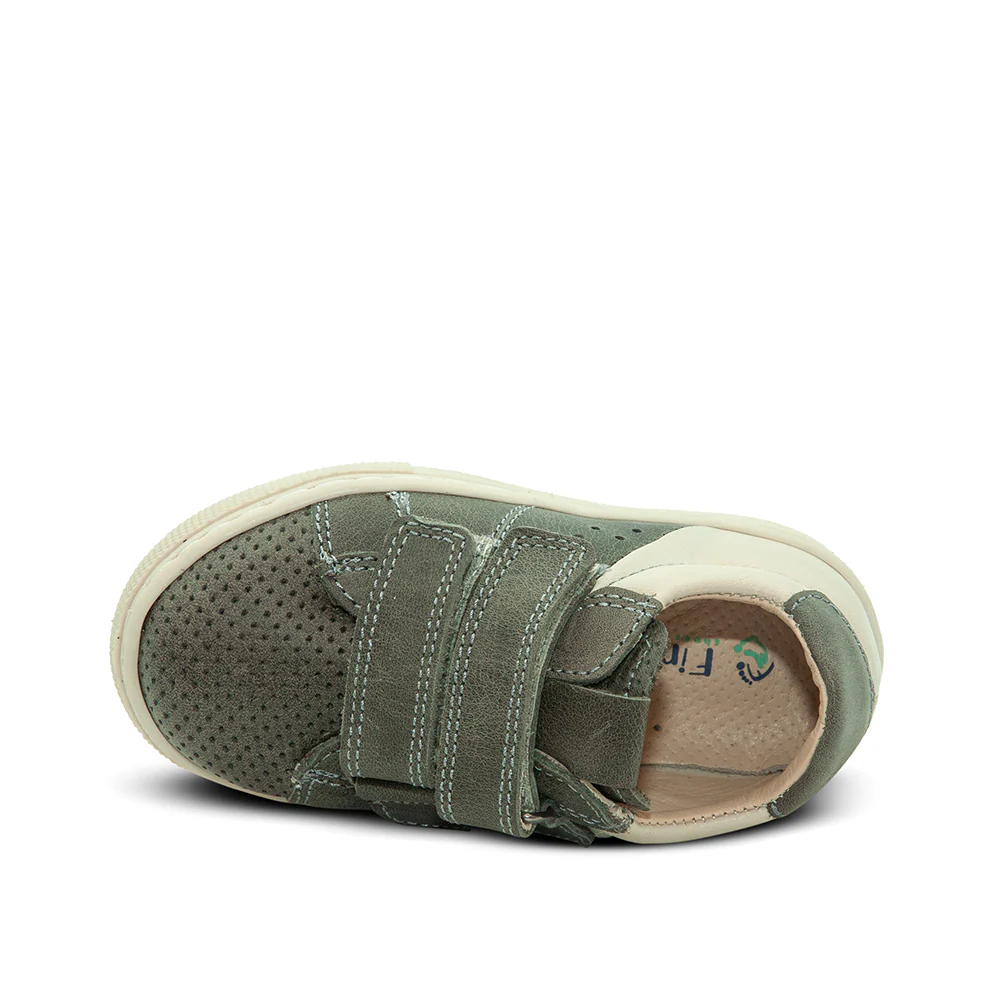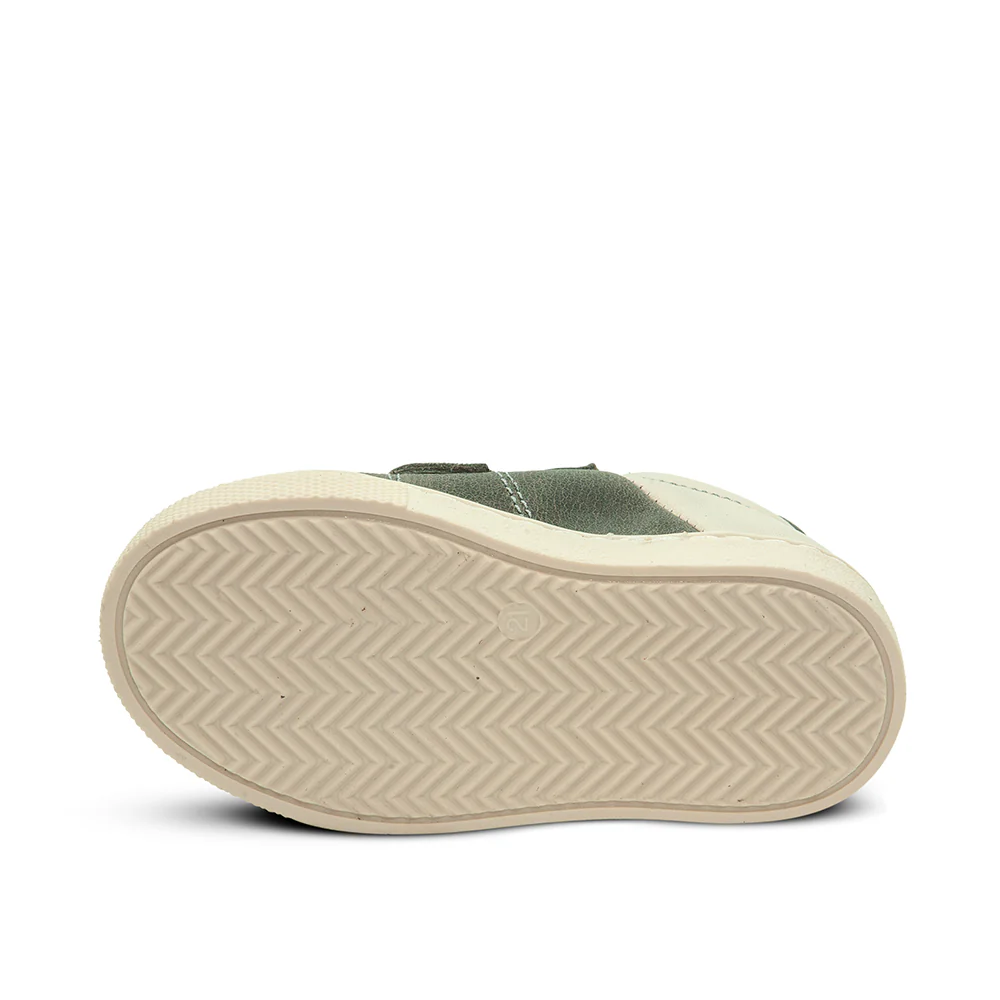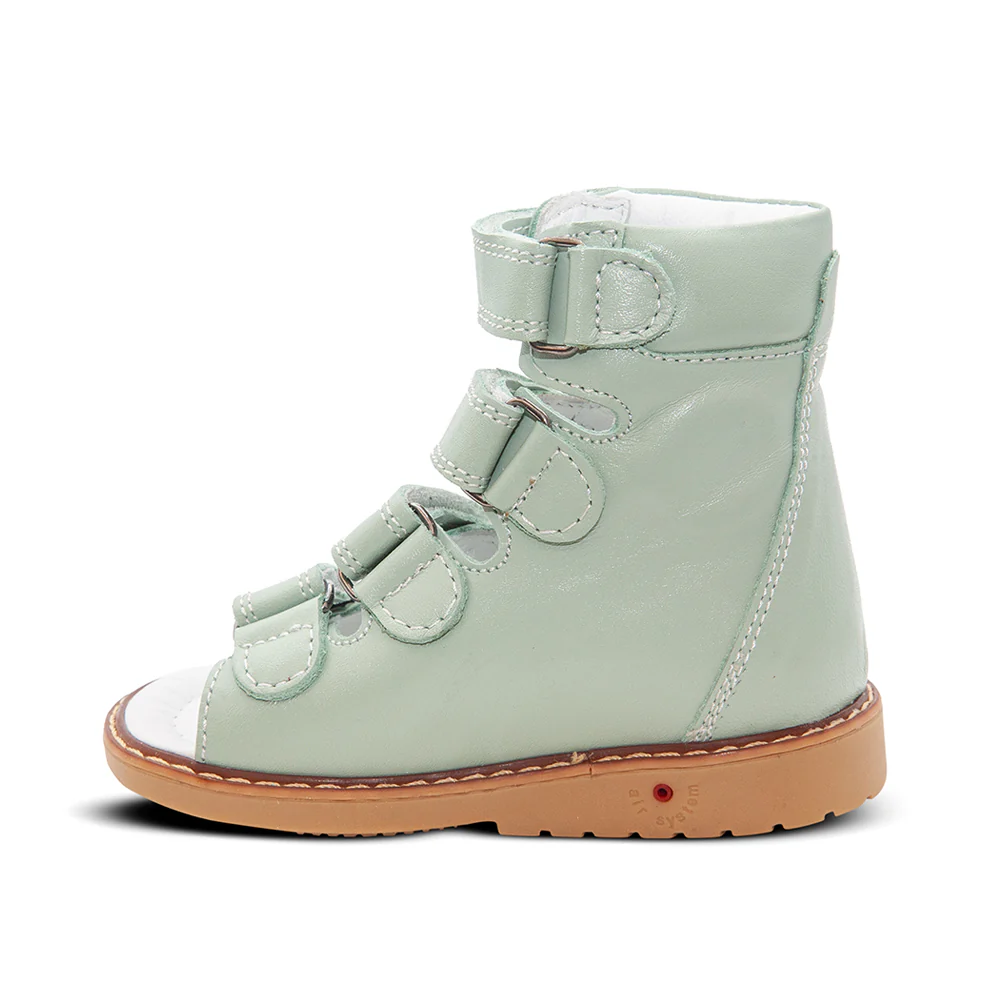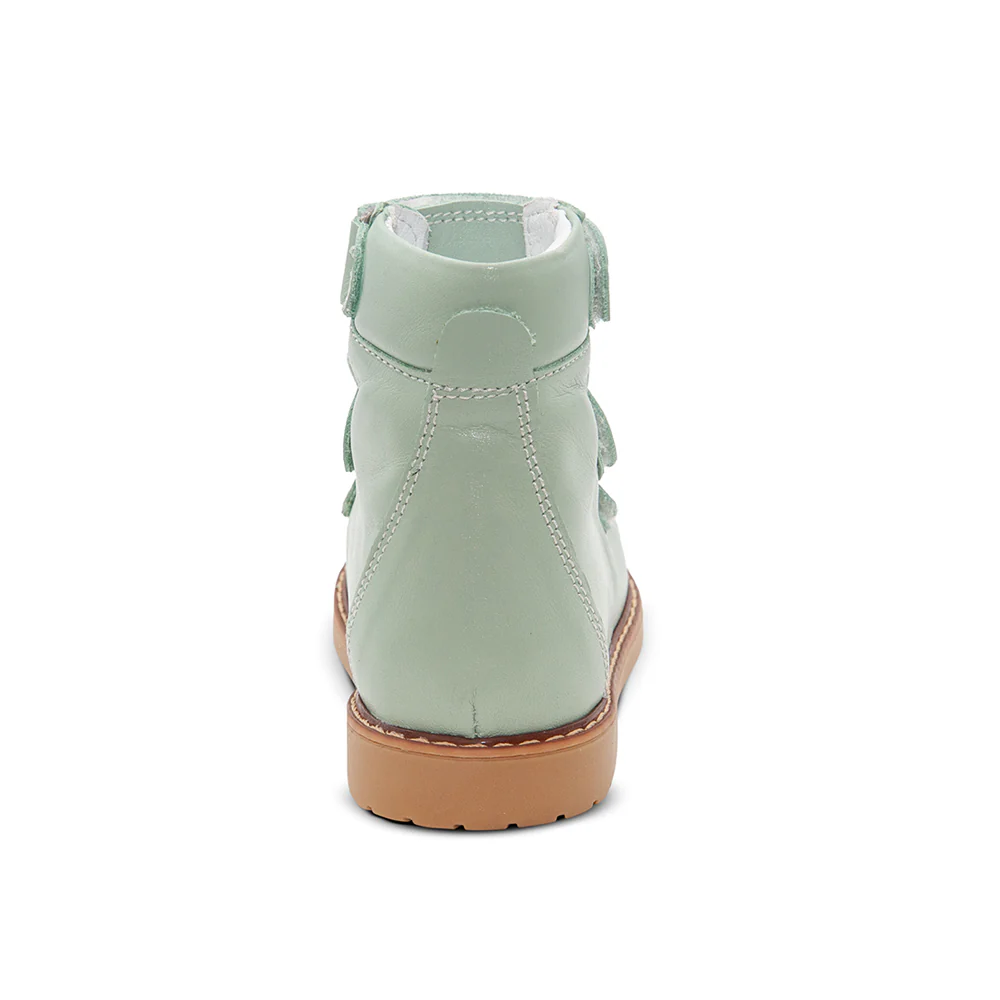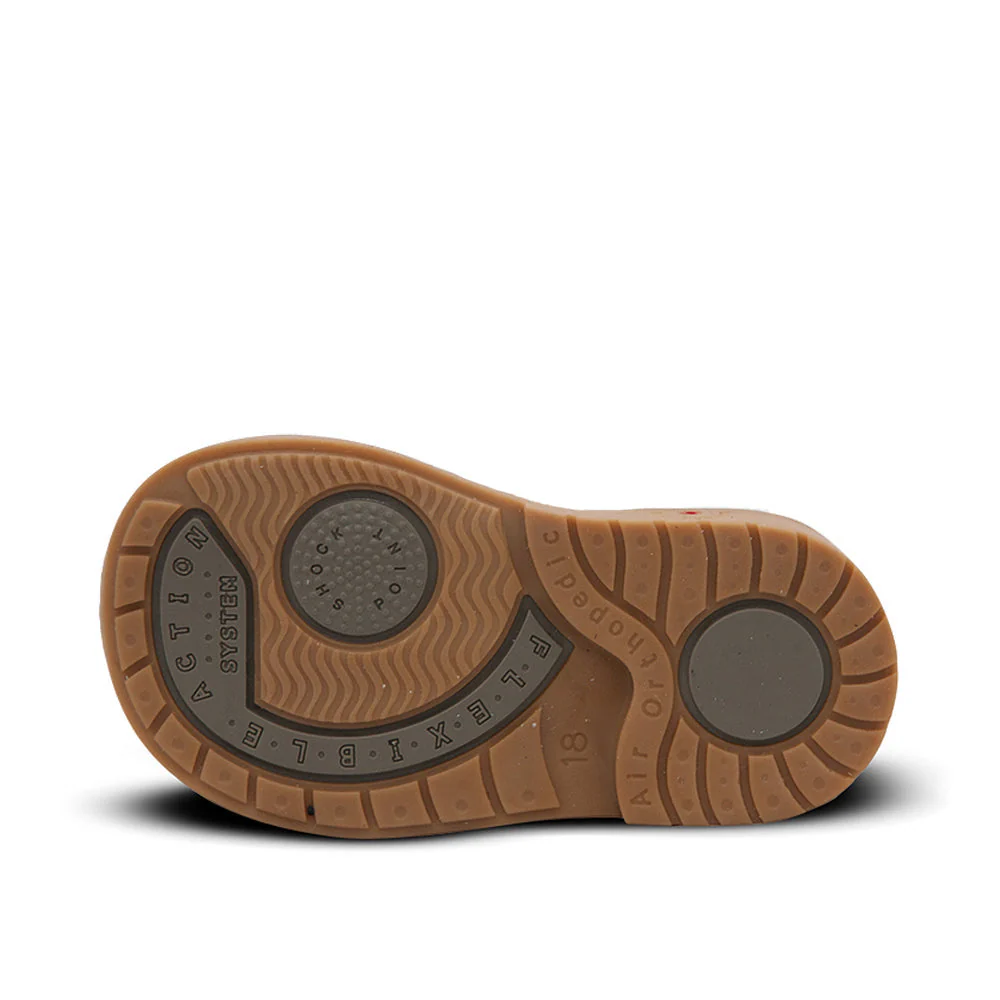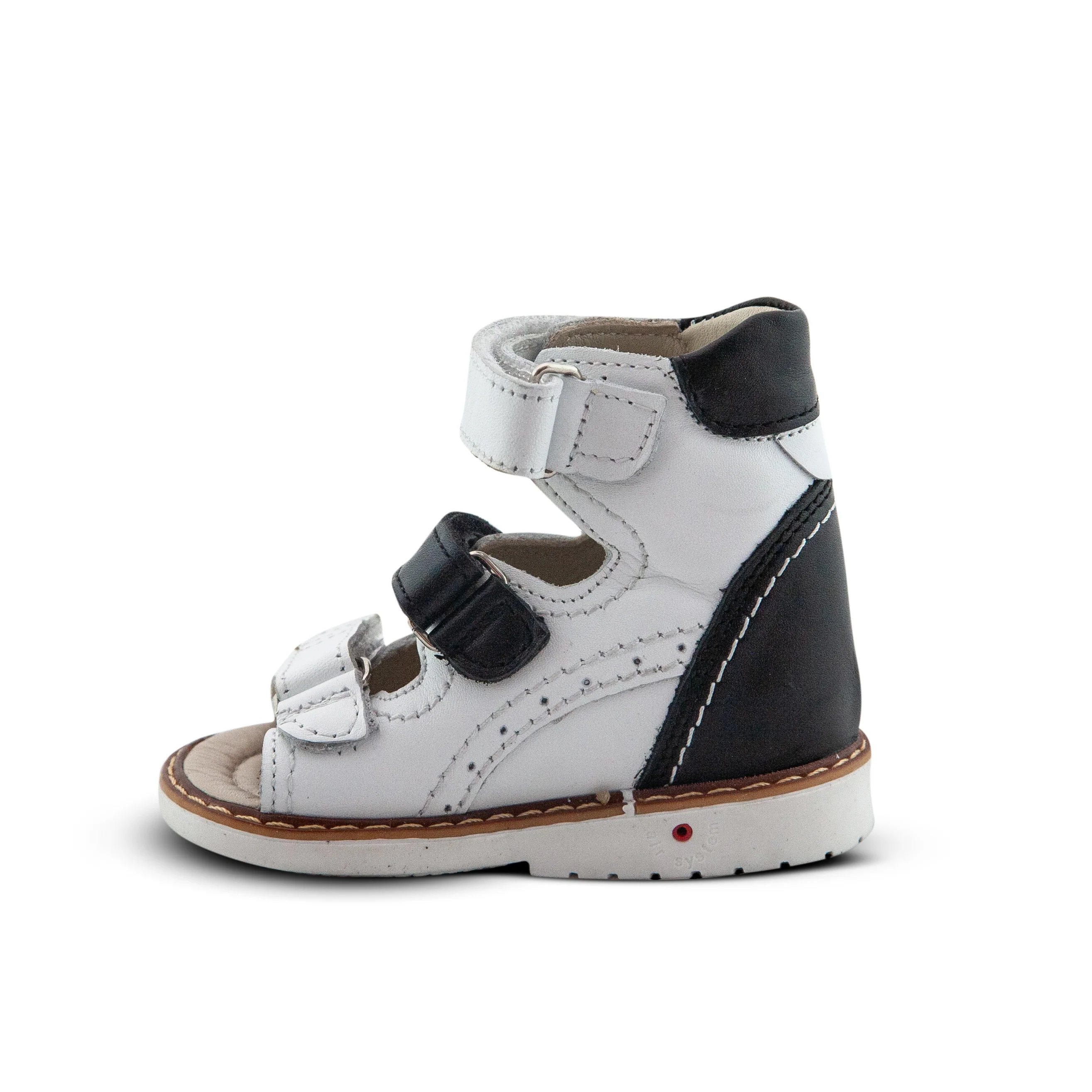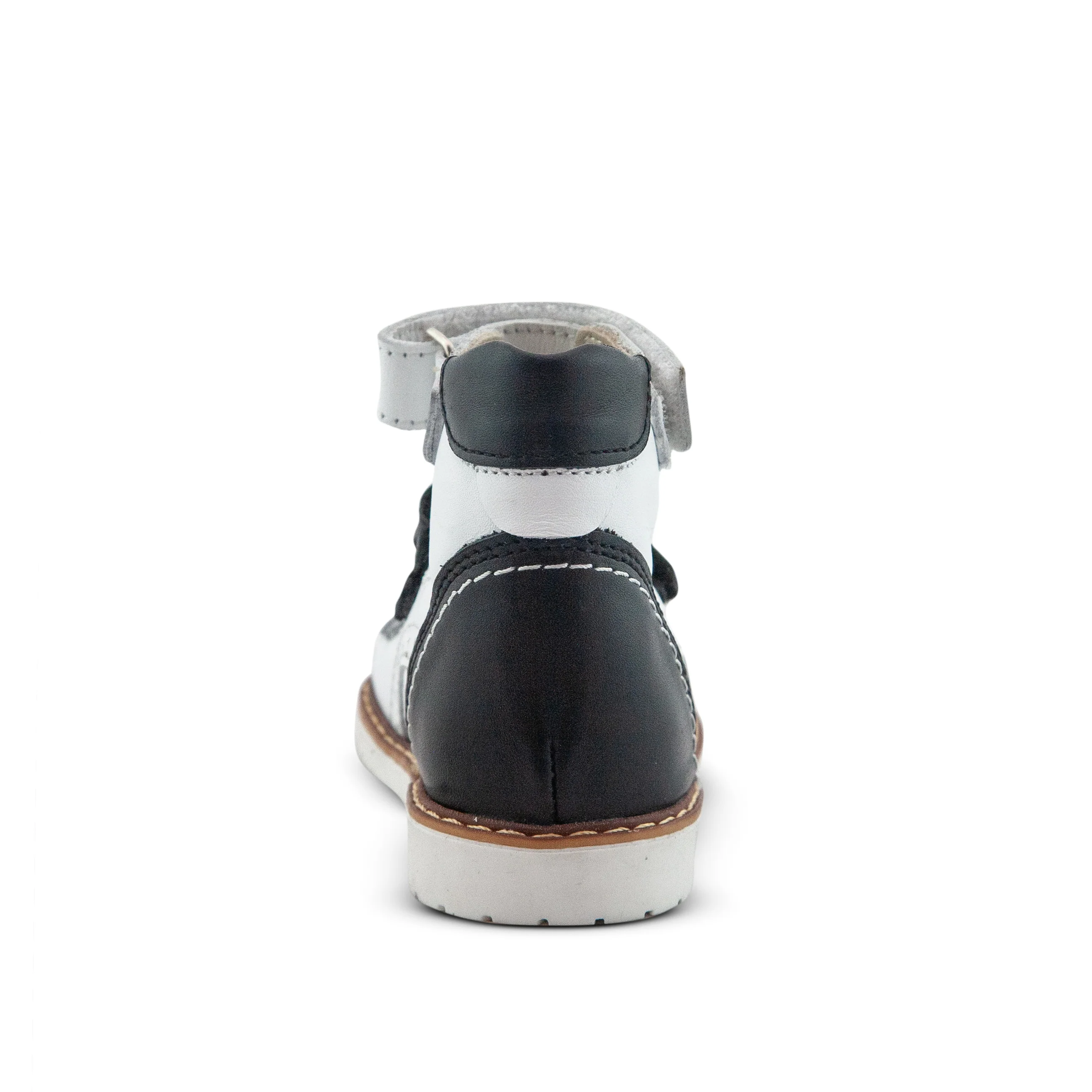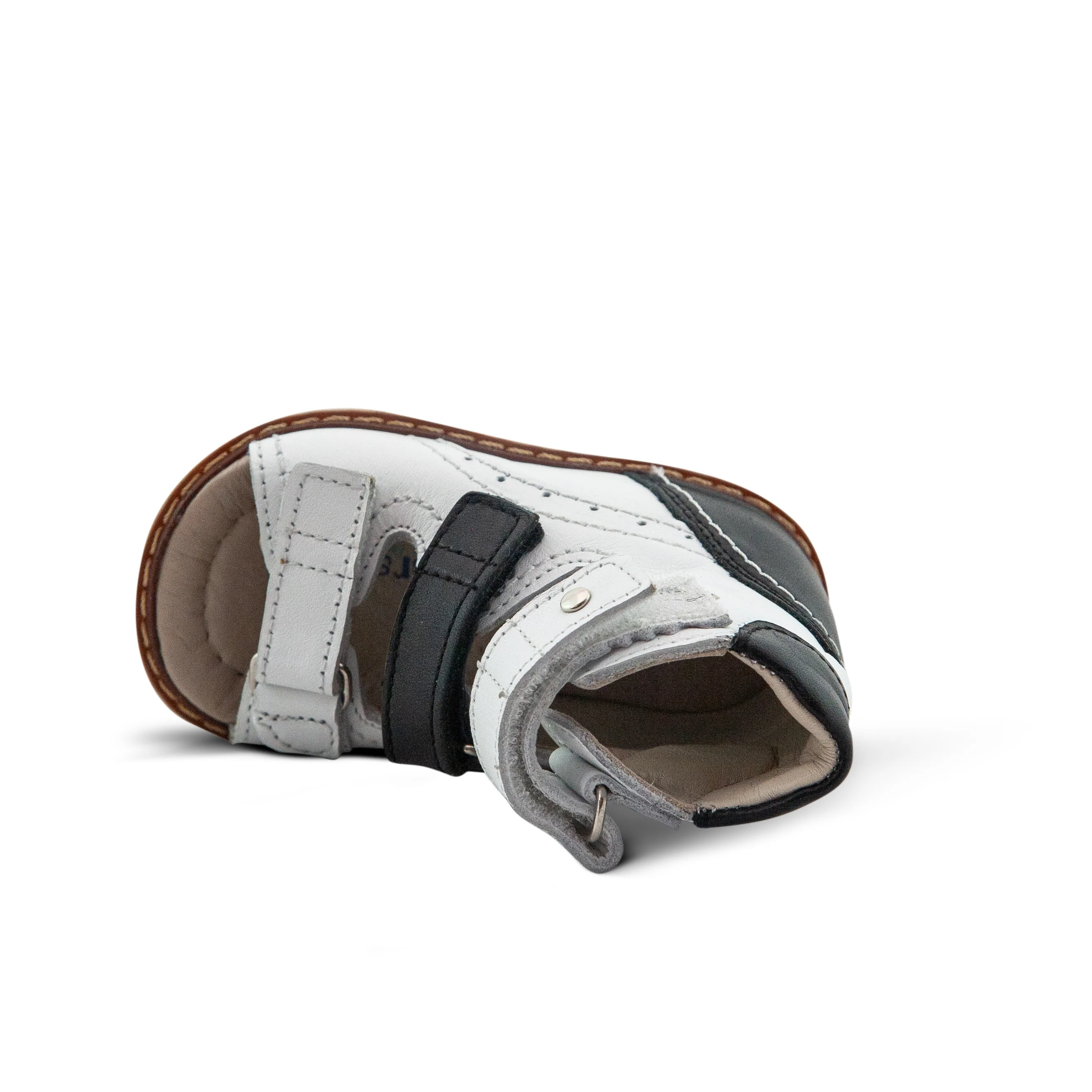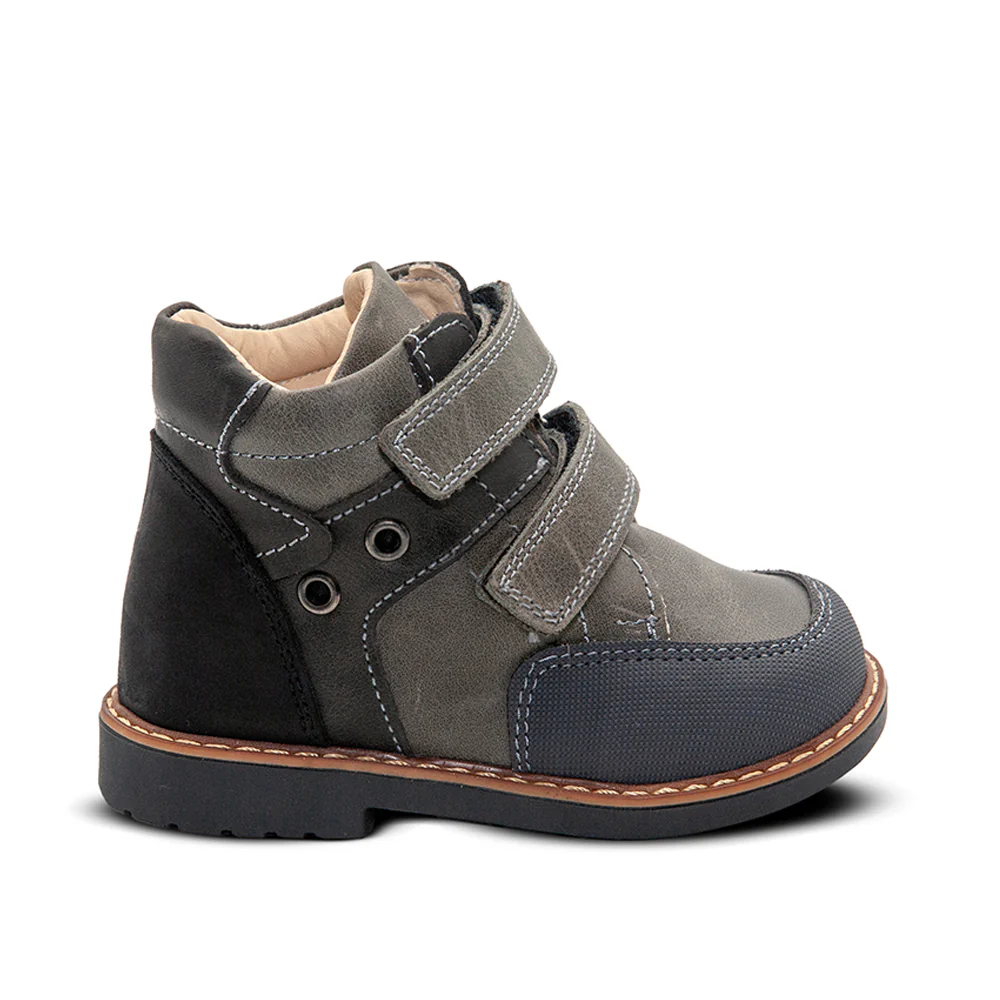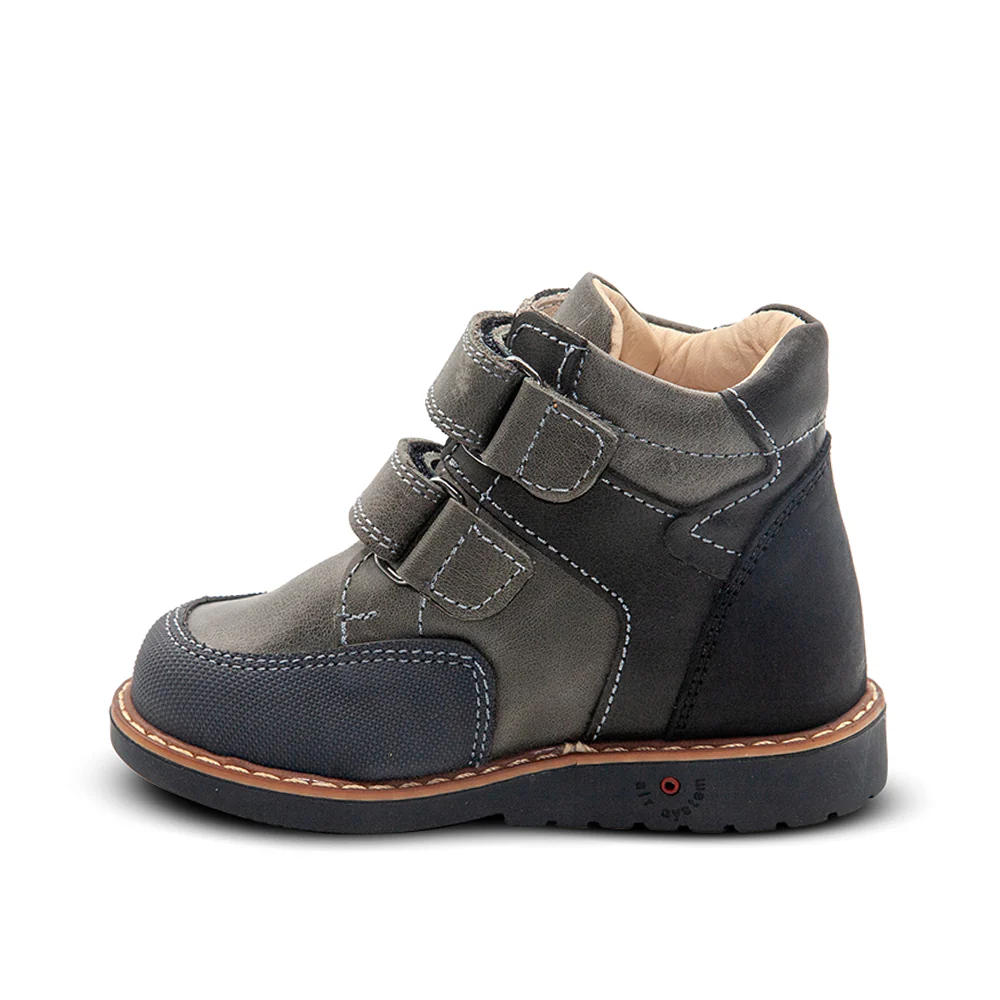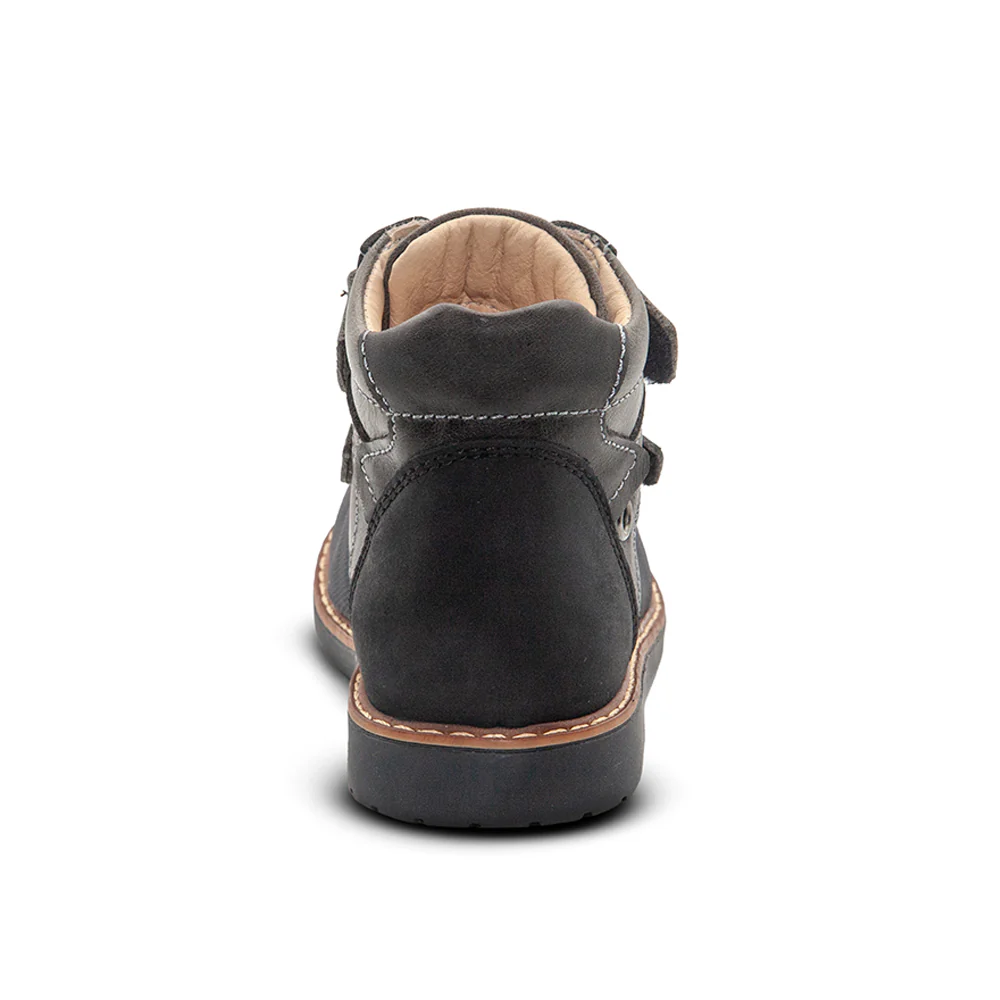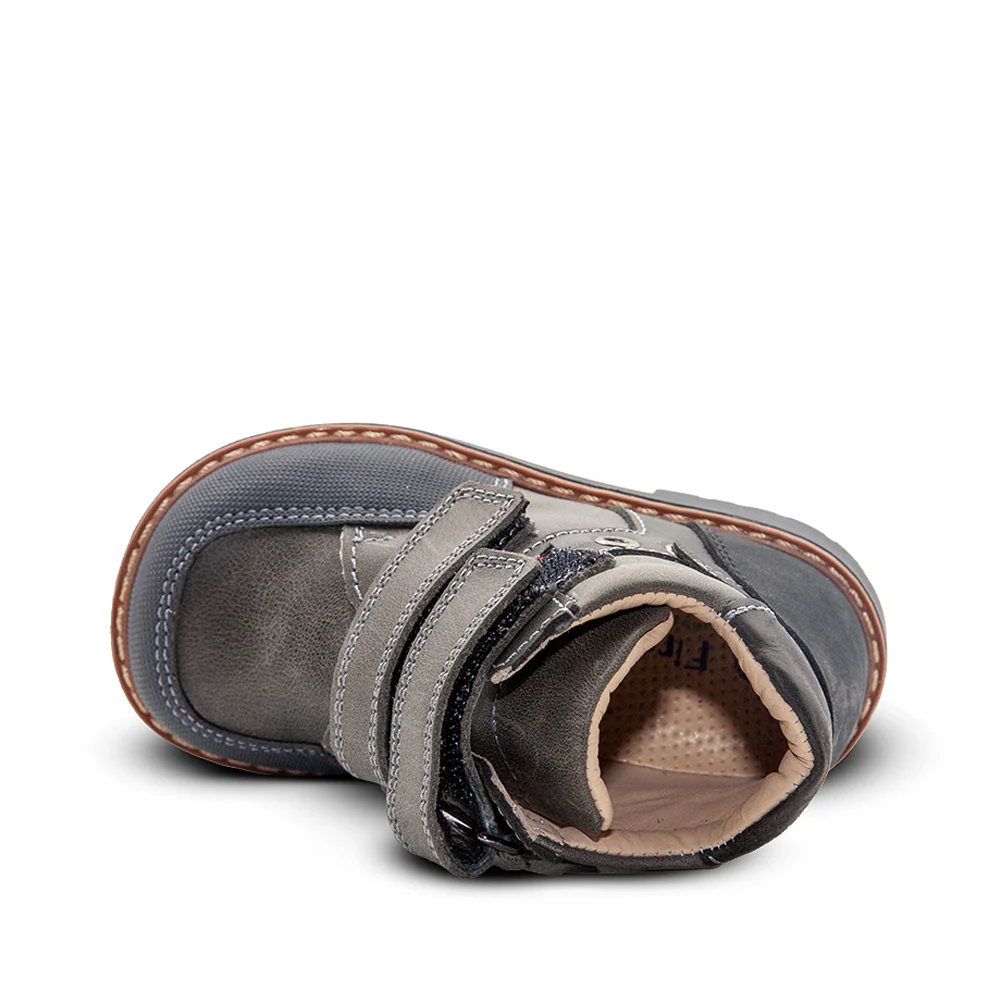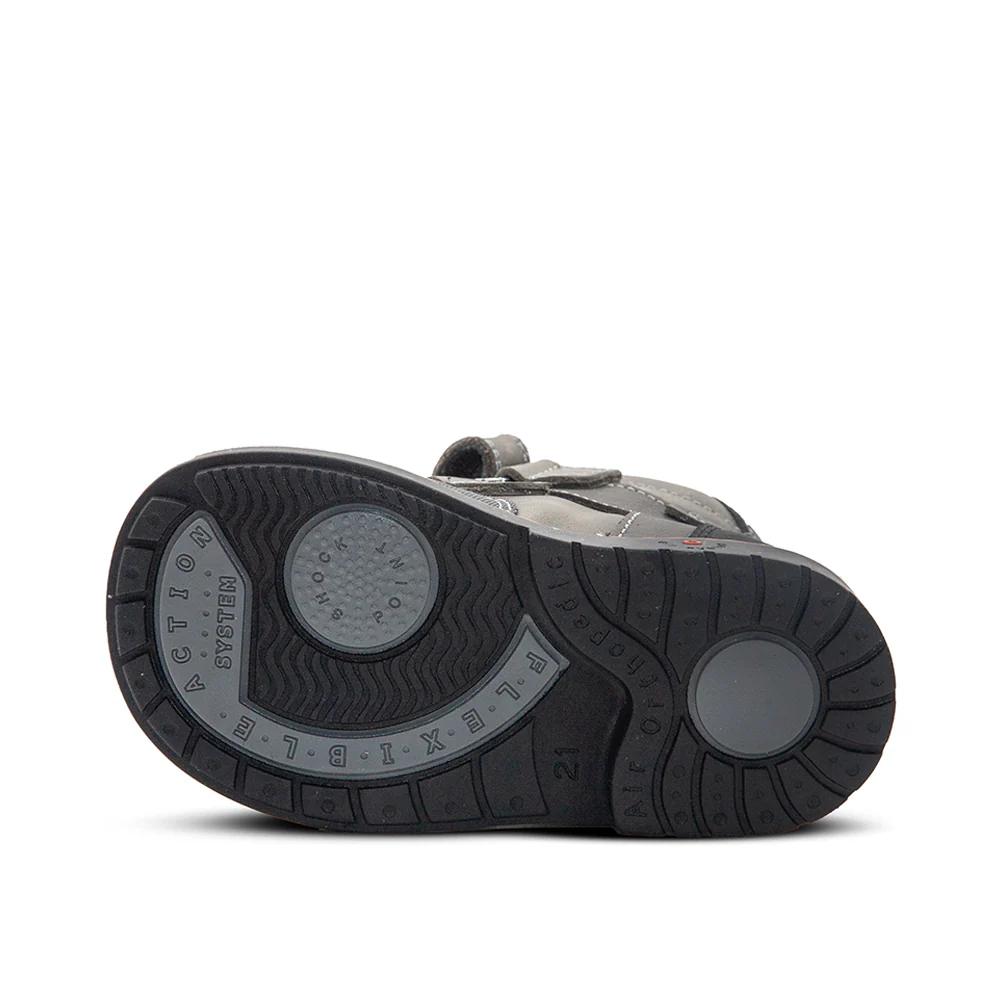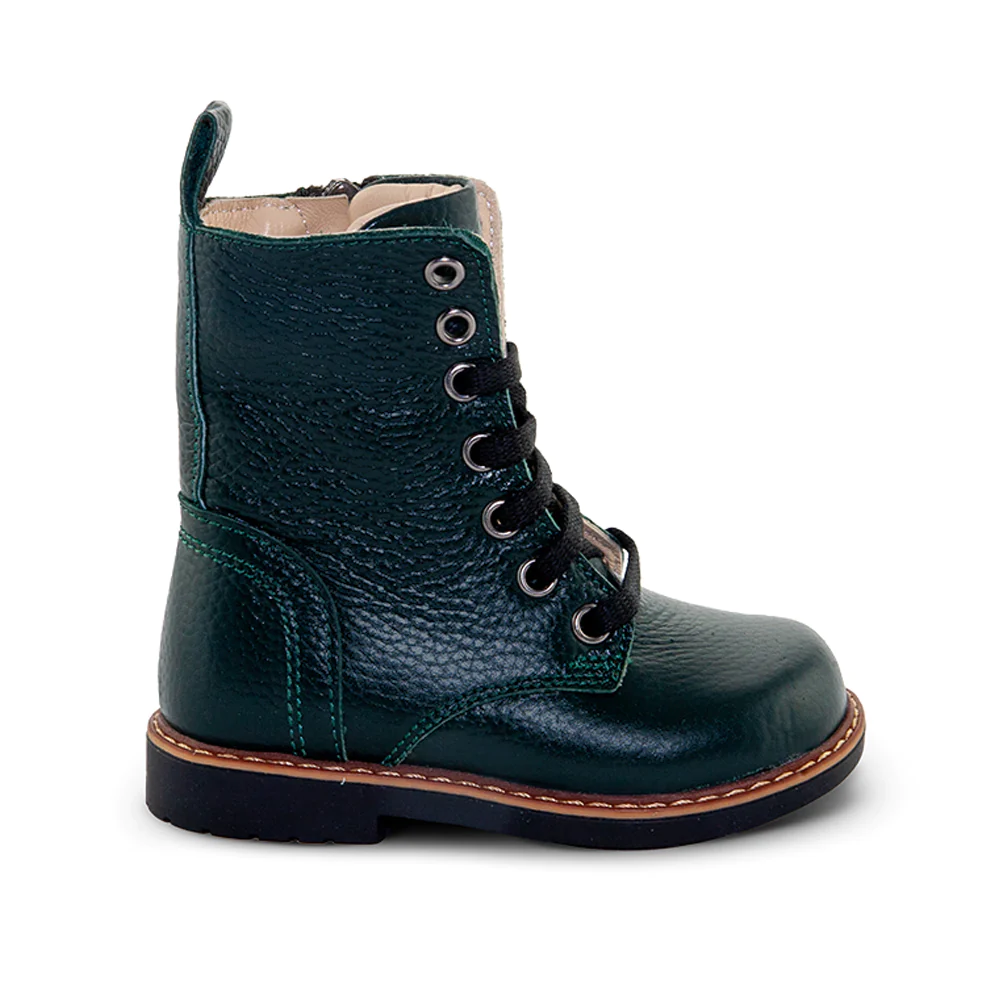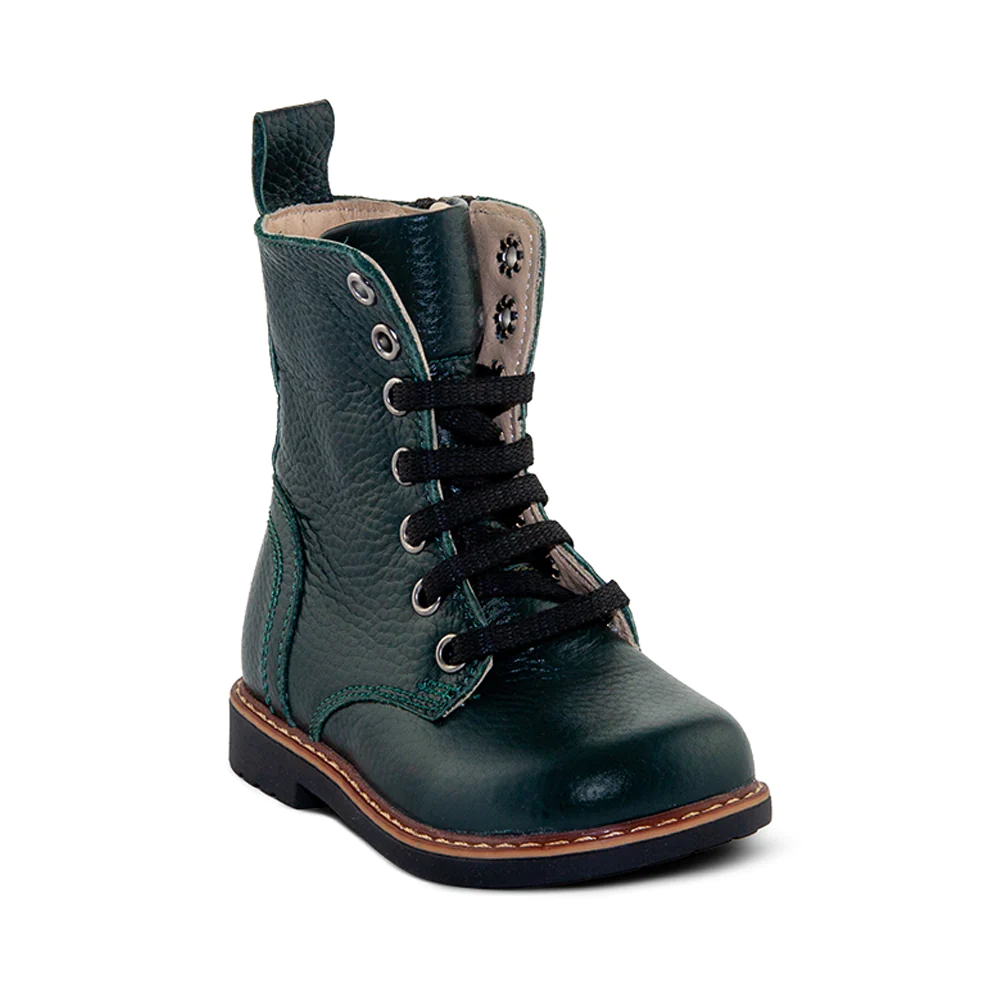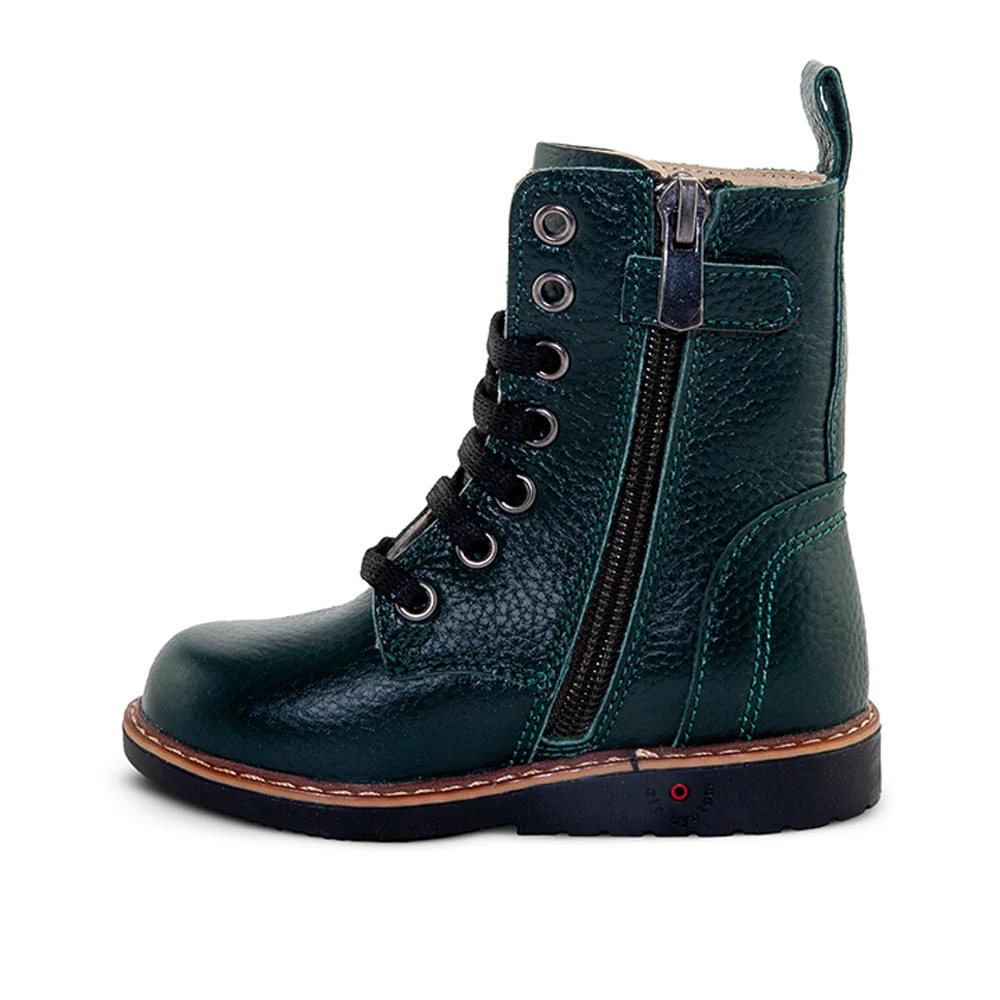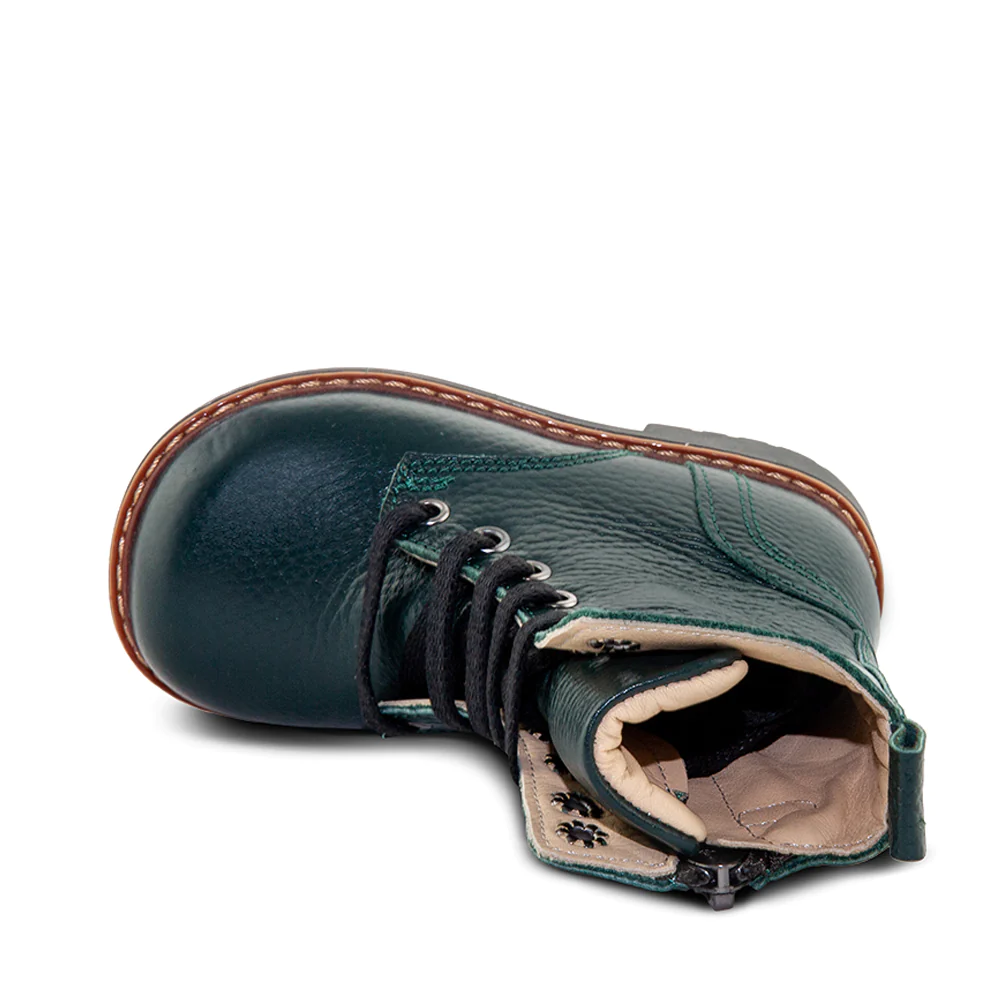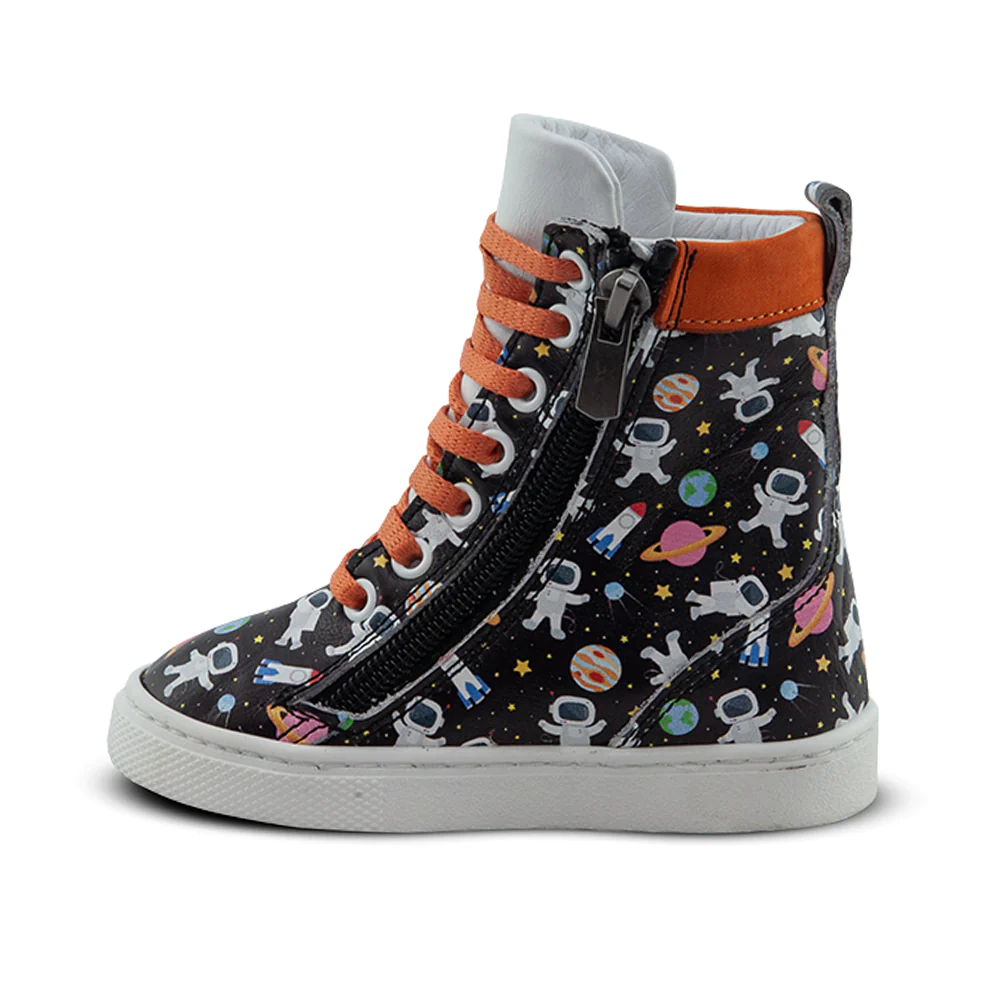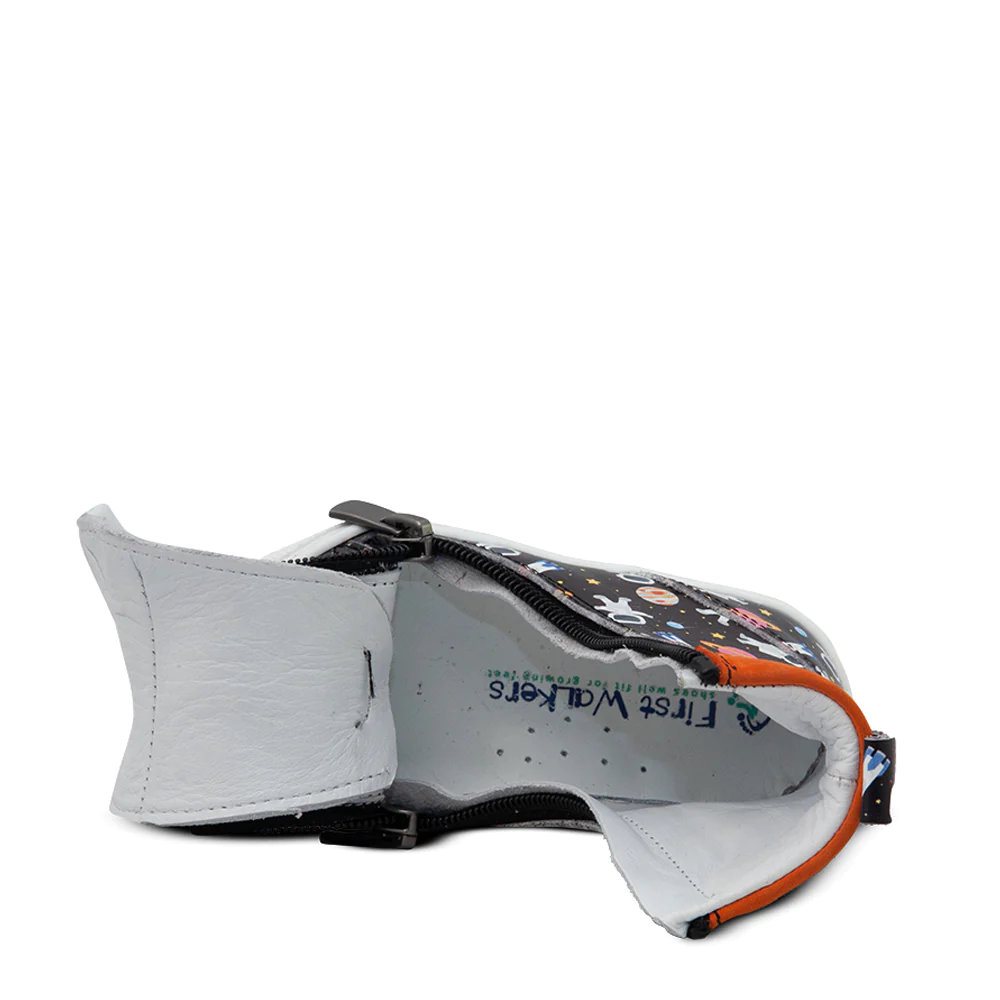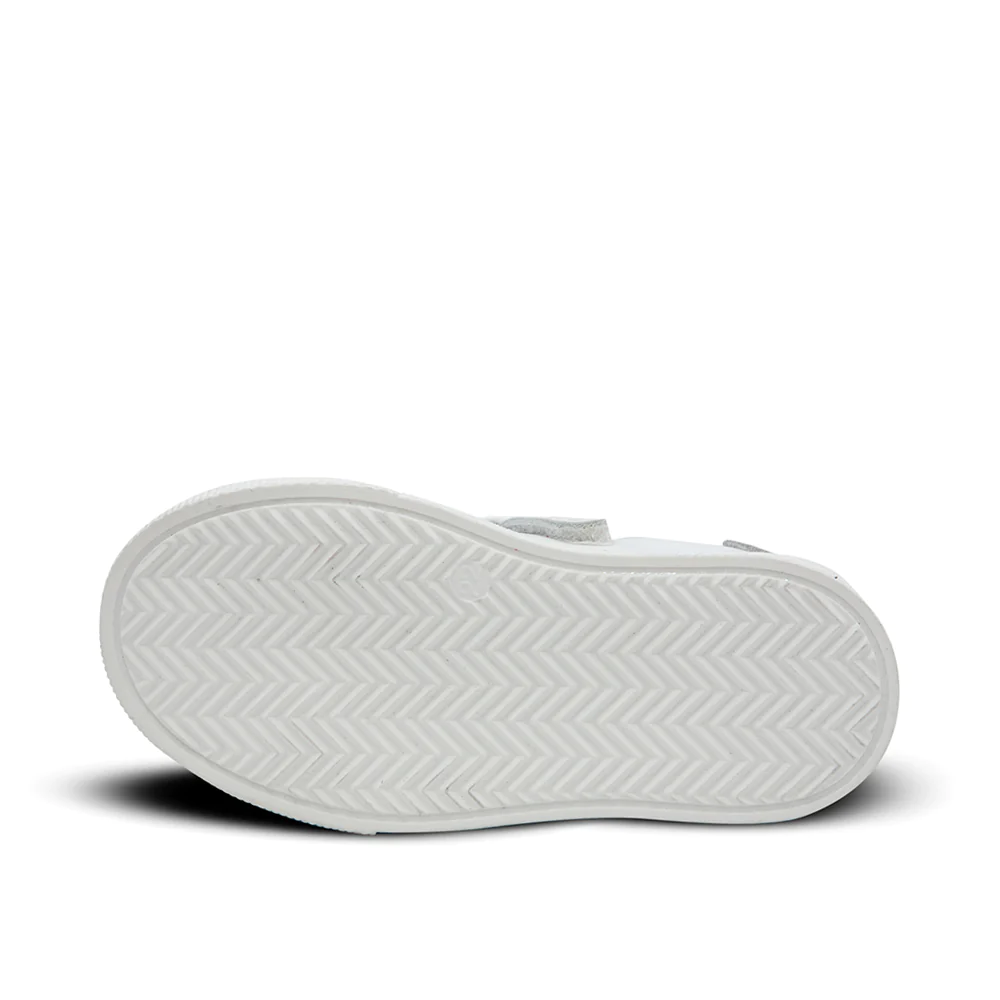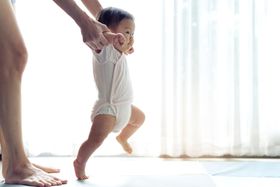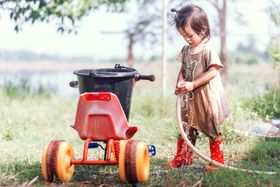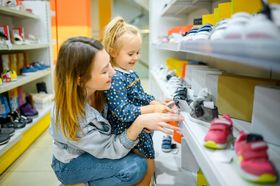6 Best Children's Walking Shoes: Comfort & Support for Active Kids
Not sure what to look for in kids’ walking shoes? We explain key features, risks of poor fit, and which shoes work best for growing feet.
Published April 18, 2025.
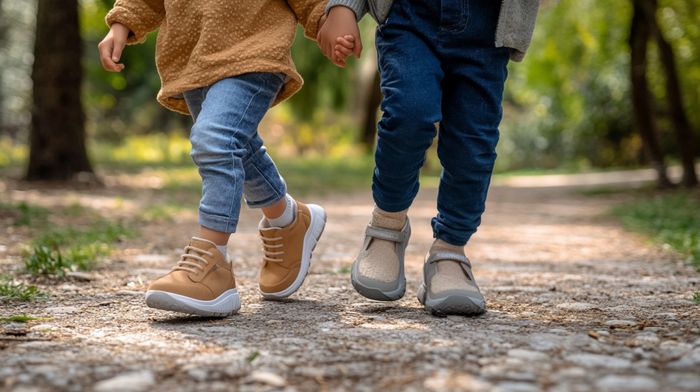
Choosing the best walking shoes for children is crucial for their foot health, comfort, and overall development. Active kids between the ages of 3 and 10 need shoes that support their growing feet while allowing freedom of movement.
This guide covers developmental needs, risks of poor footwear, essential shoe features, and top recommended walking shoes for kids.
» Find supportive fits for your young one in our orthopaedic collection
Developmental Needs and Movement Patterns for Children's Walking Shoes
Children’s feet are still developing between the ages of 3 and 10, requiring shoes that support natural growth and movement.
Key needs include support for the developing arch, which can take up to six years to fully form. Shoes must be flexible and cushioned to aid this development and prevent strain.
Rapid foot growth means shoes should accommodate quick size changes to avoid restricting joints and muscles. Additionally, delicate joints and softer bones need protection through shock absorption to prevent injuries and inflammation during active play.
» Learn more about the role of arch support in children's shoes
Risks of Poorly Fitted or Unsupportive Walking Shoes
Short-Term Risks:
Blisters and Calluses: Ill-fitting shoes cause friction and pressure points, leading to painful blisters and calluses. This discomfort can discourage children from physical activities, impacting their health and social interactions1.
Falls and Injuries: Loose or unsupportive shoes compromise balance, increasing the risk of trips and falls. Such injuries cause immediate harm and may reduce a child’s confidence in active play.
» Check out these tips for preventing foot injuries
Long-Term Risks:
Foot Deformities: Wearing ill-fitting shoes during growth can cause deformities like bunions, hammertoes, and flat feet. These conditions often lead to chronic pain and mobility issues, sometimes requiring medical treatment.
Nerve Damage: Tight shoes can compress foot nerves, causing numbness and tingling. Over time, this may lead to nerve damage, persistent discomfort, and reduced activity participation1.
» Find out more about the effects of improperly sized shoes for kids
Our Top Picks for Comfortable and Supportive Kids Shoes
Essential Features of the Best Children's Walking Shoes
Flexible Insole: Supports foot arch development and leg muscles by allowing natural foot movement during walking, running, and climbing. Materials like leather, cloth, or silicone rubber provide the needed flexibility.
Comfort Fit: Shoes must have a roomy toe box to accommodate growing toes and prevent misalignments such as flat feet or bunions. Narrow or pointed toe boxes are harmful to developing feet.
Comfortable Straps or Zippers: Adjustable closures like Velcro straps or zippers ensure a secure, comfortable fit and prevent shoes from slipping off during activity1.
Supportive Elements: Orthopaedic features such as built-in arch support and shock-absorbent insoles protect delicate foot joints from impact and repetitive stress, promoting healthy foot development1.
» Which is better for kids: regular shoes or supportive shoes?
Best Walking Shoes For Kids: Our 6 Favourites
What To Look For In Everyday Walking Shoes
Daily walks—whether it's the school run, a stroll through the park, or exploring playgrounds—can put a lot of strain on growing feet. That’s why a good pair of walking shoes should do more than just look nice.
Choose leather or other durable, dust-resistant materials that are easy to wipe clean. Washable insoles, laces, or straps also make a big difference when life gets muddy. And for safety? A non-slip outsole is a must, especially when your child walks on mixed terrain like pavement, grass, or wet playgrounds.
» Here's how to choose shoes for different stages of foot development
Comfort, Grip and Flexibility
For a walking shoe that truly supports your child, pay attention to these key features:
- Outsole grip: Multi-directional tread patterns help with traction on different surfaces.
- Cushioned midsoles: EVA or gel cushioning absorbs impact from hard pavements.
- Flexible forefoot: Flex grooves allow for smooth movement and natural foot flex.
- Breathable, durable uppers: Mesh or leather with overlays helps with airflow and scuff-resistance.
- Secure fit: Velcro or laces stop the foot from sliding around inside the shoe.
A toe rise in older kids’ shoes can help the foot roll forward more easily while walking. But for children under 5, it might not be needed—and could even interfere with muscle development in little feet that still need to grow strong.
» Find out how to identify long-lasting, durable footwear for your kids
Big adventures start with the right shoes
The right pair of walking shoes does more than keep your child comfortable—it supports healthy development, boosts confidence, and keeps little feet safe on every adventure. Whether your child is racing around the playground, walking to school, or exploring nature trails, the right fit makes all the difference.
Always look for supportive, well-fitted shoes that suit their age and activity level. And don’t forget—kids' feet grow fast, so check sizes often. A good walking shoe today sets the foundation for strong, happy feet tomorrow.
» Explore our orthopaedic shoe collection, built for growing feet
